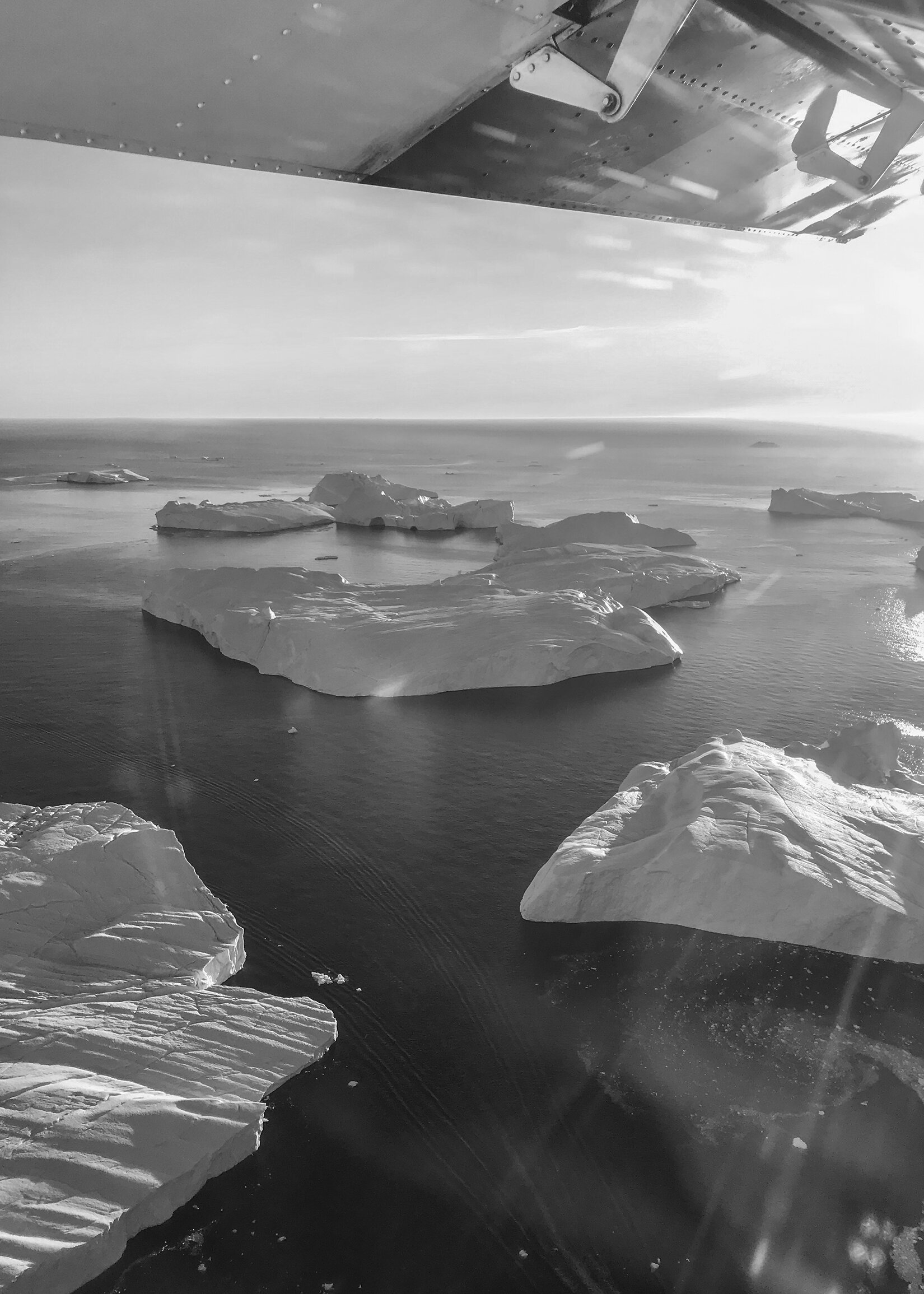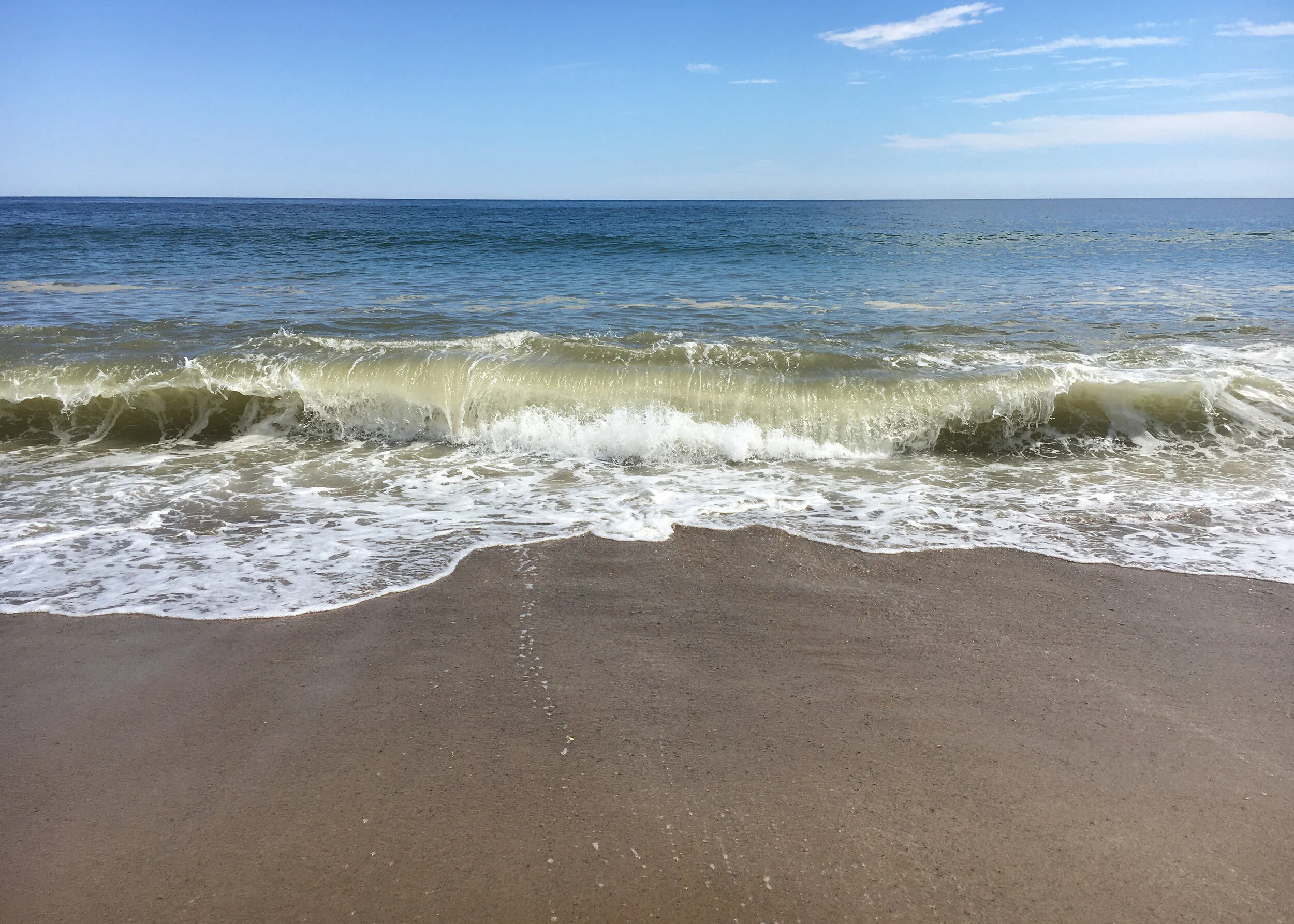Extra Insights I
The Sea from Here
Words from the people behind the lenses
As an accompaniment to The Sea from Here, we’re sharing some of the words that were sent along with your images – specifically those related to climate change. These short captions were volunteered by the photographers, and there’s a clear emphasis on coastal change. These are, in effect, short witness statements from people who live on the coast, or are drawn to visit it often; who keenly observe and record their findings. “Coastal erosion is devastating here”, says Lisa Churchward; “floods have increased here”, reports Amy Friend. These witnesses speak of changing ocean behaviours, inundation, erosion and pollution; but also the sea’s emotional pull. “The sea was a revelation”, Leslie Hickey writes.
“Jokulsárlón – glacier river lagoon – is located at the south east of Iceland and floats into the close by ocean. The lagoon is affected by the tides, as are the icebergs. The incoming sea-salt leads to a faster melting of the ice. The glacier from which the icebergs and the water is coming from is Europe’s biggest: Vatnajokull – water glacier.
This image is the result of a scanning process. Our team is scanning bergs in order to 3D print them again. These become the monuments of climate change.”
Jökulsárlón (Glacier River Lagoon), Iceland
Alessa JM Brossmer & Jochen Orso
“During March we travelled with the snowmobile onto the fjord. We regularly find small cracks here, but the ever increasing larger cracks obstruct our ability to cross.”
Uummannaq, Greenland
Paaluk Kreutzmann
“One sunset last April. You can see that the sea ice is already starting to melt and nobody’s using the ice. Close to the town you can see open water and a strong current – this is where the melt begins.”
Uummannaq, Greenland
Paaluk Kreutzmann
“People from here say there’s less sea-ice today, icebergs are shrinking, and it’s not so cold in wintertime. Used to be -40°C when I was young, a local told us when we arrived. Minus 28°C is the coldest we’ve experienced in the five and a half years we’ve lived here.”
Ilulissat, Greenland
Carina Björling
“Floods have increased here over the last few summers.”
Lake Ontario from Port Dalhousie, Ontario, Canada
Amy Friend
“The last time I saw the sea was just as the pandemic was emerging – I was beginning my new project on the Atlantic in Ireland, and my last kayak jaunt was on the most vicious of days – setting out from Letermulan (Connemara) to Golam Head. This image was taken on that last day, when half way there, holding onto some rocks while using a reef for brief shelter.”
Golam Head, Connemara, Ireland
David Gange
“I've lived here my whole life and I'd say the cliff [behind] has eroded about 15 metres inland, which is a lot considering I'm 25. My dad says it is to do with the new marina that was built a few years ago (which was protested against, but the developers won) which took over from our quaint harbour and subsequently led to the currents flowing in a different direction, leading to more erosion on the beach.”
North Beach, Greystones, Ireland
Li-Ann Smal
“I see Eilean Dubh (Black Isle), a tiny island that sits in Loch Boisdale, every day. This image shows a familiar pattern from the intertidal zone of the Isle which is repeated on rocky tidelines the length of Uist. Along with Tiree, Islay and Sanday in Orkney, Uist is one of the areas most vulnerable to changes in sea level brought on by climate change.”
Eilean Dubh, Isle of South Uist, Scotland
Michael Faint
Read more in Michael’s Journal
“Usually, you can’t see the line that divides the sky from the sea. Most days it’s blended into one, and that’s how I think of the sea in Lima. The city wasn’t built to face the sea, it turns inward, inland, and while the sea is always there, it is often forgotten. I look out at the sea every day, and I made this image on a rare evening when the horizon was visible, a small break in the clouds and fog opening up the distance that is mostly invisible.”
Lima, Peru
Ana Lía Orézzoli
“When I finally got to the sea, it was a rare day on the Oregon coast, there were no clouds and it was clear all the way to the horizon. That day had the bluest sky, the deepest blue water. After almost two weeks of heavy wildfire smoke, it was a relief to just be there, without the apocalyptic yellow clouds and pink sunlight I had been living through. The sea was a revelation; everything was clean and beautiful and being there already felt like a memory.”
Neahkahnie, Oregon, USA
Leslie Hickey
“We notice direct human intervention here, more than anything else. The harbour is constantly being developed and changing form.”
Busan Harbour, Busan, South Korea
Patrick Lydon
“We experienced really high seas in February 2020, which saw a huge amount of debris – logs, seaweed, coral – washed onto the shore. Unfortunately, I didn’t keep photos of logs and trees that got washed ashore after the fires down on the south coast in January 2020. Even in May, there were still piles of timber on the beaches around my area – they are now being bulldozed and the beaches cleaned.”
Avoca Beach, NSW, Australia
Jane Lethbridge
“The path to the beach has been changed again this year, due to erosion. Henry Beston's The Outermost House (1928), the house since lost to the elements, raised public awareness of the terrain here and its fragility.”
Cape Cod, Massachusetts, USA
Patricia Emison
“Freshwater and saltwater flooding shapes the wetlands here. High tides flood the mangrove and tidal flats, creating food-rich environments for fish, crabs, molluscs and birds. Spring tides flood the saltmarshes several times every year. During major floods most of Tinchi Tamba is covered by water.”
Tinchi Tamba Wetlands, Queensland, Australia
Rachael Wellisch
“The sea here is the Solway Firth, home to Robin Rigg offshore wind farm. Captain Roy Kerr of the tallship La Malouine, docked in nearby Palnackie told me 'Rigg' means ridge/spine – a raised part of the sea bed – which I knew because it is a Norse word (hryggur) and I speak Icelandic. This is a place where ships used to run aground and would be looted by pirates. Such a topographic feature is also a good place to put the wind turbines to minimise the height of the shafts.”
Balcary Hill, Dumfries & Galloway, Scotland
Sarah Thomas
“America’s east coast is among the places sea level rise has – and will continue to – significantly affect.”
Montauk, New York State, USA
Gonzaga Gómez-Cortázar
“The sea wall at Douglas Terrace has been undermined by recent storms. The character of the estuary is ever changing but there is real evidence of the impact of more storms and higher tides.”
Broughty Ferry, Dundee, Scotland
Stewart Murdoch
“Coastal erosion is devastating here. We’ve lost over 50m of sand (6m high) in the last 2 years, and we are about to lose a road and our surf club to the sea. The wreck of the Amazon (1863) is now visible on the shore.”
Inverloch, Victoria, Australia
Lisa Churchward
“On Friday (14th August) I swam from England to France as part of a relay team … it was a truly incredible thing to do!”
Near Cap de Gris Nez, Calais, France
Katie Mcalister
“…from the coastline of Oqaatsut, one of the smallest settlements on the north-west coast of Greenland – taken from the sea-ice. I love the metaphor of sea-ice as water temporarily transformed into ever moving land…”
Oqaatsut, Greenland
Andreas Hoffmann
The time we wasted glimmers at the end of your eyes |
From the public art project Disgha (photographed in 2020) | “In 2018 I produced Disgha, a large scale intervention across the Maltese archipelago. The work is composed of verses from 9 different poems by 9 different Maltese poets engraved on different sites and rock formations across the islands, effectively creating a land constellation across the territory.
The verses are all engraved using a specifically-created Maltese font and focus on the transient nature of the work itself. This for me was a gesture of love to my land, my mother tongue, a comment on the current environmental situation and an attempt in blurring the lines between permanence, impermanence and memory. It also deals with the notion of horizon and perimeter, and the cultural osmosis that happens on all kinds of borders.
Most of the engravings perished or will be eroded in time, so we are thinking of sedimenting the memory of the interventions in a publication: the only testimony of this transient art installation. Here’s an image of the Valletta site, taken late last year.”
Valletta, Malta
Austin Camilleri





















